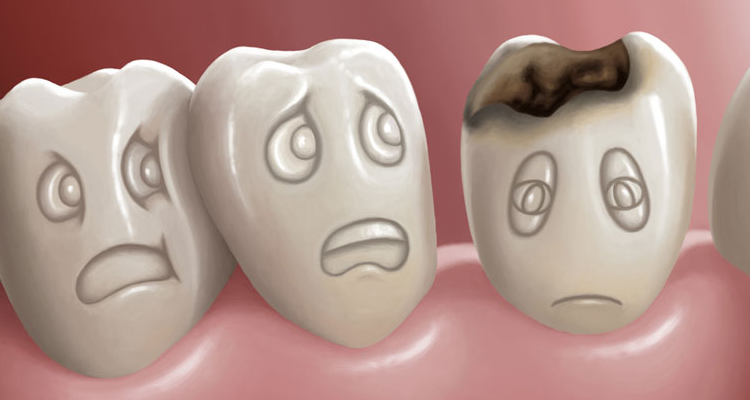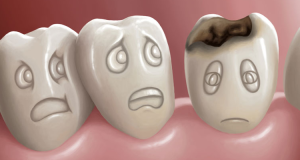Tooth decay is a destructive process that occurs over time. If left to continue, tooth cavity and tooth loss among other horrible complications may occur. Some of the longer term issues that decay causes are cavities, that require fillings or potentially worse, processes like root canals. In order to avoid creating these dental problems for yourself, there are some simple steps that you can follow. By following the guidelines in this article, you can easily keep you and your entire family free from tooth decay and tooth problems in general.
Proper Brushing
Good oral hygiene is the best way to keep tooth decay at bay. Proper brushing technique and routine is thus recommended for the entire family. Both the frequency, duration and technique of brushing will determine whether you get tooth decay or not.
Always brush at least twice daily; before going to bed at night and any other time preferably an hour after meals. When you brush, be sure to do it for at least two minutes using quality toothpaste and a good toothbrush. It isn’t advisable to brush immediately after eating since this might damage the teeth. This is especially true if you have just had fizzy drinks, wine, fruits or any other form of acidic food.
Proper Brushing Technique
- With the toothbrush head against your teeth, tilt the bristle tips 45O to the gum line
- Using small circular motions, brush the outer, upper and lower surfaces of each tooth. Do the same for the inner surface of the teeth. Brush also the chewing surfaces of the teeth.
- Brush your tongue too. This freshens your breath and removes unwanted bacteria from your mouth.
- Do not rinse out the toothpaste. Water or mouthwash will wash out the protective properties in the toothpaste
- Try to avoid eating or drinking for the next 30 minutes
Electric toothbrushes work just as well as manual toothbrushes. However, have your toothbrush replaced regularly to preserve its efficacy in plaque removal. Get good quality fluoride toothpaste to enhance further the cleanliness of your pearly-whites.
Proper Flossing
Proper flossing cleans teeth by eliminating plaque and removing bits of food from between the teeth and under the gums. These are places where a toothbrush can’t reach. Ensure that you floss at least once daily before or after brushing. The proper way to floss is to:
- Take about 30-50cm of the floss and grasp such that you have an appreciable length taut between your hands.
- Gently slip it between the teeth and into the space between the teeth and the gums.
- Use at least 8 strokes, up and down, for each tooth until you are fully satisfied that there is no material lodged within.
Flossing can be replaced with interdental brushes for folks whose teeth are intimately related with almost no space for between them.
Use Mouth Wash
Alcohol-free dental mouthwash with fluoride is effective in fighting tooth decay. It, however, is not advisable to use the mouthwash immediately after brushing. Set aside time for the mouthwash for instance after lunch.
All the above practices should then be complimented by a proper diet rich in calcium, phosphorous and fluoride. Keep off too much sugar and acid in your food, snacks and drinks. In so doing, you will keep your smile healthy and your teeth free from decay.
For more information on sound dental practices, this site http://urgentdental.com.au has a useful blog full of basic information that can assist.

